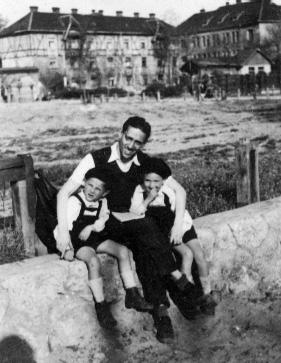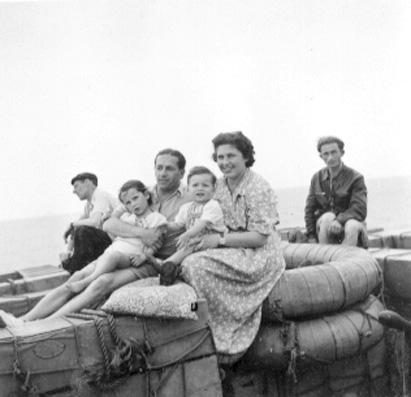.jpg?itok=6Mr5y8yh)
Yad Vashem Publications
.jpg?itok=cExyu8Yh)

Yad Vashem Publications


Yad Vashem Publications

.jpg?itok=L-Y7Xg2j)
Yad Vashem Publications
.jpg?itok=GXTUBu6F)
At the end of WWII, approximately half of the Jewish population of Budapest had survived the onslaught of Nazi occupation and the fierce fighting surrounding the Soviet conquest of the city – the largest rescue of a Jewish community in all of Europe. All this had taken place in just under a year – from March 1944 to February 1945 – and while much of the credit for Jewish survival is given to the courageous efforts of neutral diplomats who used their prestigious positions to protect Jewish citizens, none of their efforts could have succeeded without the dedicated work of Jewish rescuers on the streets of Hungary's capital.
One important figure in this praiseworthy group was Peretz Revesz, a refugee from Slovakia and a leader of the Maccabi Hazair Zionist youth group. Revesz's story, Standing Up to Evil, A Zionist’s Underground Rescue Activities in Hungary, was recently released by Yad Vashem Publications.
When deportations from Slovakia began in March 1942, Zionist youth leaders decided to foster flight to Hungary. Forced to flee for his role in this, Revesz and his new wife Nonika escaped to Budapest in April. There, he joined forces with local activists to help thousands of incoming Jewish refugees, becoming a member of the Vaada L’Ezra Vehatsalah (the Relief and Rescue Committee), led by Otto Komoly and Israel Kasztner. Among other activities, Revesz became responsible for providing false documents to Jewish refugees. Revesz also aided Joel Brand, who led the "Tiyul Committee" to help Jews reach Hungary from Poland, aiding up to 2,000 refugees before the German occupation of Hungary on 19 March 1944.
Between March and July 1944, in coordination with the Germans, Hungarians marked, robbed, concentrated and then deported the Jews of provincial Hungary. Some 437,000 were brutally expelled, primarily to Auschwitz, where most were murdered. Owing to outside pressure, the course of the war and fear of air attacks, on July 7, Hungarian leader Miklós Horthy halted the deportations. He also decreed that several thousand Jews would be able to go to Mandatory Palestine. Several months of quiet ensued for the Jews of Budapest, but after 15 October, when the Germans brought the fascist Arrow Cross to power, deportations were renewed, this time to the Austrian border. In Budapest, murder by the Danube and ferocious warfare transformed rescue into a desperate struggle to preserve Jewish lives for a matter of months, until the successful Soviet takeover of the city.
With the German occupation, Revesz and the Zionist youth underground began smuggling Zionist youth out of Hungary, primarily to Romania, with the intent to travel on to the Land of Israel. Several thousand Jews made their way to Romania until August 1944, when Romania severed its alliance with Germany and the border shut down.
At the same time, protection granted by neutral diplomats to Jews gained momentum and force, especially after Horthy's offer of emigration to the Land of Israel. Since the Swiss represented British interests and immigrants needed British "Certificates of Aliyah", potential immigrants came under Swiss protection. Other neutral diplomats like Raul Walleberg also granted protective papers, and in the fall, special houses were established for Jews with international protection. Revesz and his comrades forged tens of thousands of protective documents and handed them out. Genuine and false papers alike helped safeguard many Jews. In addition, the International Red Cross established over 50 children's homes under their protection, headed by Otto Komoly. In October, Revesz became responsible for one of these homes. International protection was not foolproof but it remained a central cog in the machinery of rescue.
After the Soviet conquest, Revesz took over the Department of Child Protection and the Youth Aliyah Office, and then led the Bricha movement guiding Jews out of Hungary towards Israel. He and his family reached Israel in May 1949, and moved to Kibbutz Kfar HaMaccabi, where he remained until his death in 2011.
The story of Peretz Revesz and other members of Zionist youth movements who risked their lives to help fellow Jews has gone down in history as a supreme expression of Jewish solidarity under unprecedented persecution. The details of these courageous activities are coming more and more to light, and undoubtedly, additional accounts of Jewish rescuers throughout the areas under Nazi domination will continue to receive public attention through future research and publications.










